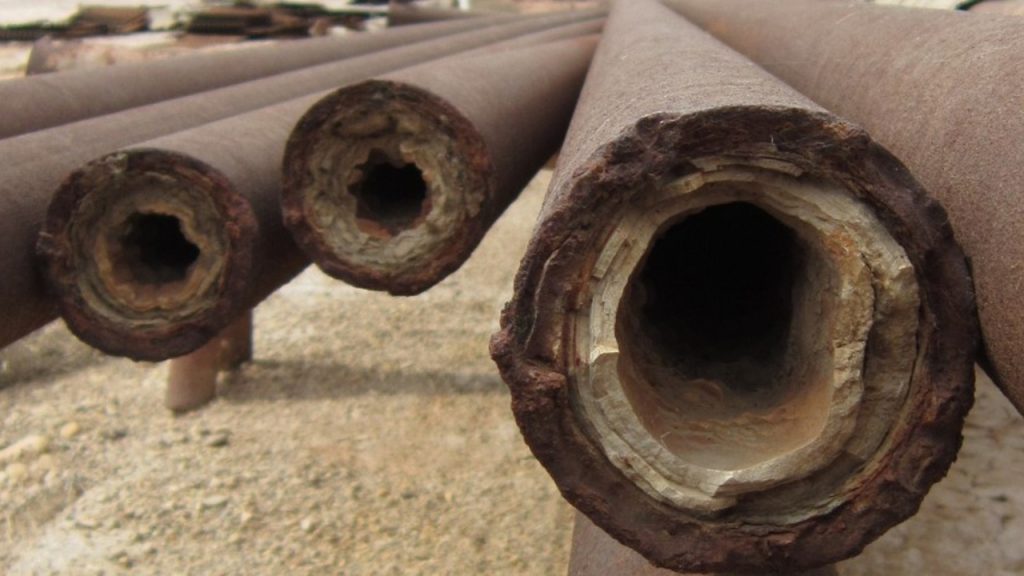Overview
Antiscalants are a type of chemical that actually prevents the production of scale-forming crystalline mineral salts and also their precipitation. The induction duration for calcium carbonate is substantially less than that for sulphate scales like calcium sulphate. Even though there are effective scale cleaners, it is more cost-effective to avoid scaling formation. Scale frequently clogs the feed tubes of RO elements, making cleaning difficult and time-consuming. There’s also the possibility of membrane surface damage due to scaling.
There are three techniques to control the scale. Some of them are softening, antiscalant addition, acidification, and ion exchange.
All about Antiscalants:
Antiscalants are pre-treatment balls or chemicals used in the Reverse Osmosis water purification process to keep the membrane from scaling.
It is critical for maintaining the quality and also for maintaining longevity of the Reverse Osmosis Membrane. Antiscalants (also known as scale inhibitors) are used to reduce the risk of scale forming on the surface of a RO Membrane. By adding antiscalant to the feed water, we can avoid the scale growth on the membrane’s surface. We commonly use them to prevent salts like silica, iron, barium sulphate, calcium carbonate, gypsum, and others from scaling.
All about Scale:
Mineral compounds or salts build up on the surface of the reverse osmosis membrane. They also reduce the flow rate. Membranes are critical in water purification, as we all know. Water’s high TDS content is reducing via a membrane. The concentration of these mineral components in water varies depending on the feed water source. We list below the mineral sealants in order of scaling ability:
(i) High Capacity ( Calcium Carbonate (CaCO3), Calcium Sulphate (CaSO4) ,Strontium Sulphate (SrSO4), Barium Sulphate (BaSO4))
(ii) Low Capacity (Calcium Phosphate [ Ca3(PO4)2 ], Calcium Fluoride ( CaF2 ) )
(iii) Non-Harmful (Silica ( SiO2 ) )
Acidification:
Acid addiction depletes carbonate ions, depriving calcium carbonate precipitation of one of the essential reactants. This is effective in preventing calcium carbonate precipitation but ineffective against other types of scale. The corrosivity of the acid, the high expense of tanks and monitoring equipment, and the fact that the acid lowers the pH of the RO permeate is all disadvantages. Ion exchange softening uses salt to exchange magnesium and calcium ions that are rich in RO feed water. After all of the sodium ions have been replaced by calcium and magnesium, the resin must be regenerated with a brine solution. The use of ion exchange softening reduces the requirement for acid or antiscalant to be continuously fed.
Antiscalants: They are surface-active compounds that obstruct precipitation reactions in three ways:
- Threshold inhibition: Threshold inhibition refers to an antiscalant ability to keep supersaturated solutions of highly soluble salts from forming.
- Crystal modification: Antiscalants have the ability to deform crystal structures, resulting in a soft non-adherent scale. Negative groups on the antiscalant molecule attack the positive charges on scale nuclei as a crystal begins to form at the submicroscopic level, disrupting the electrical balance required to propagate the crystal growth. Scale crystals that have been treated with crystal modifiers seem deformed, oval in shape, and also in less compact.
- Dispersion: Some antiscalants have the ability to adsorb on crystals or colloidal particles and impart a high anionic charge, which keeps the crystals apart. Moreover, we separate the particles from fixed anionic charges on the membrane surface by the high anionic charge.
Bottom Line
Antiscalants are essential when preserving the quality and efficiency of a Reverse Osmosis Water Purifier. Antiscalants come in a variety of flavors. Moreover, we should make our decision based on the quality of the water we have access to. This blog is mainly written with the goal of providing as much information as possible on scaling and also antiscalants. Please feel free to contact us to know more about scaling and antiscalants. Do you find this article interesting? Then please visit the rest of the blogs as well. We’re confident you’ll find them exciting and valuable as well.


